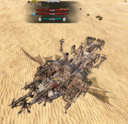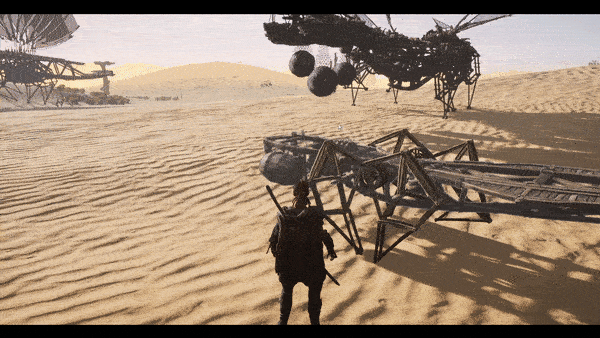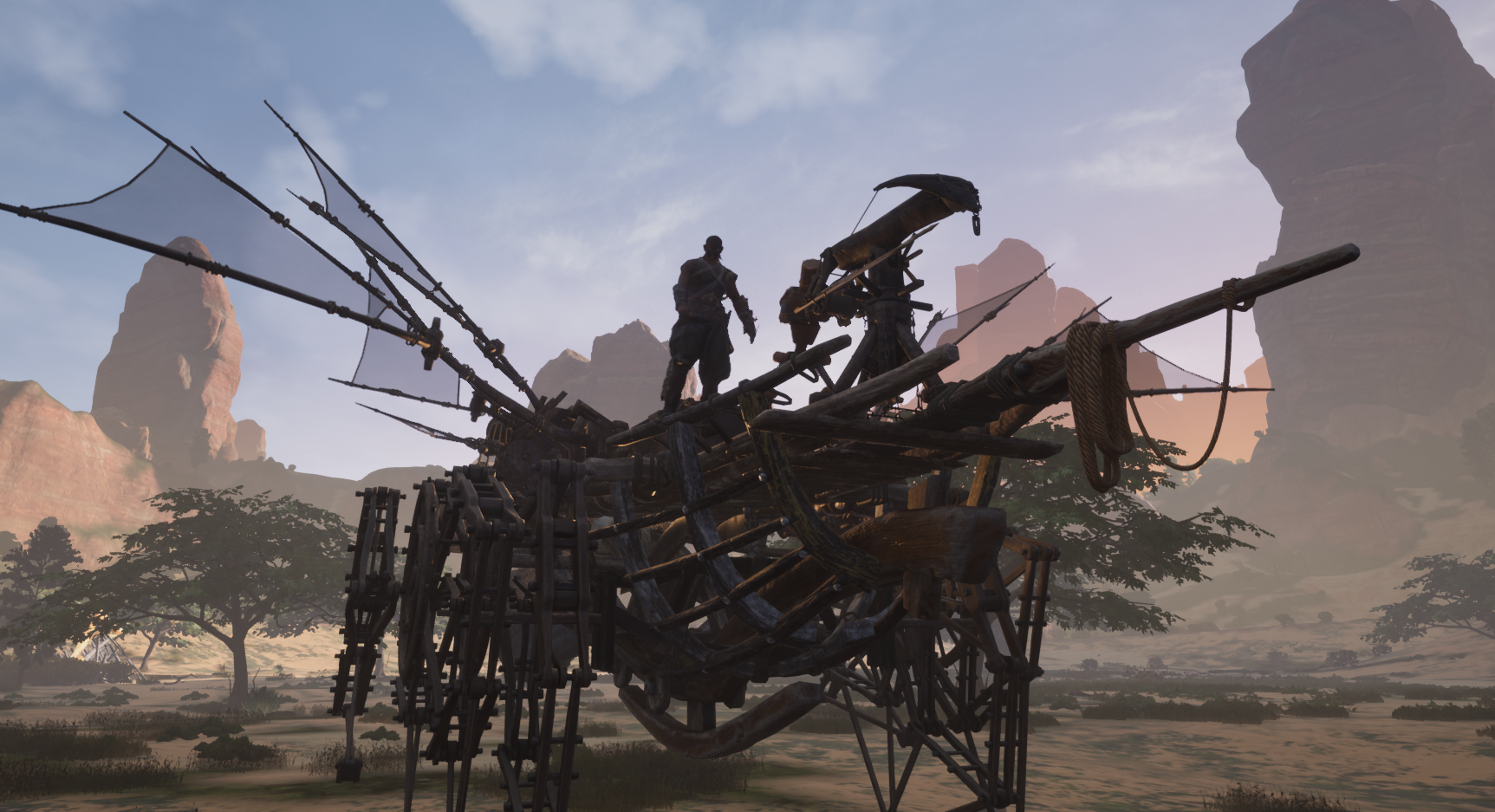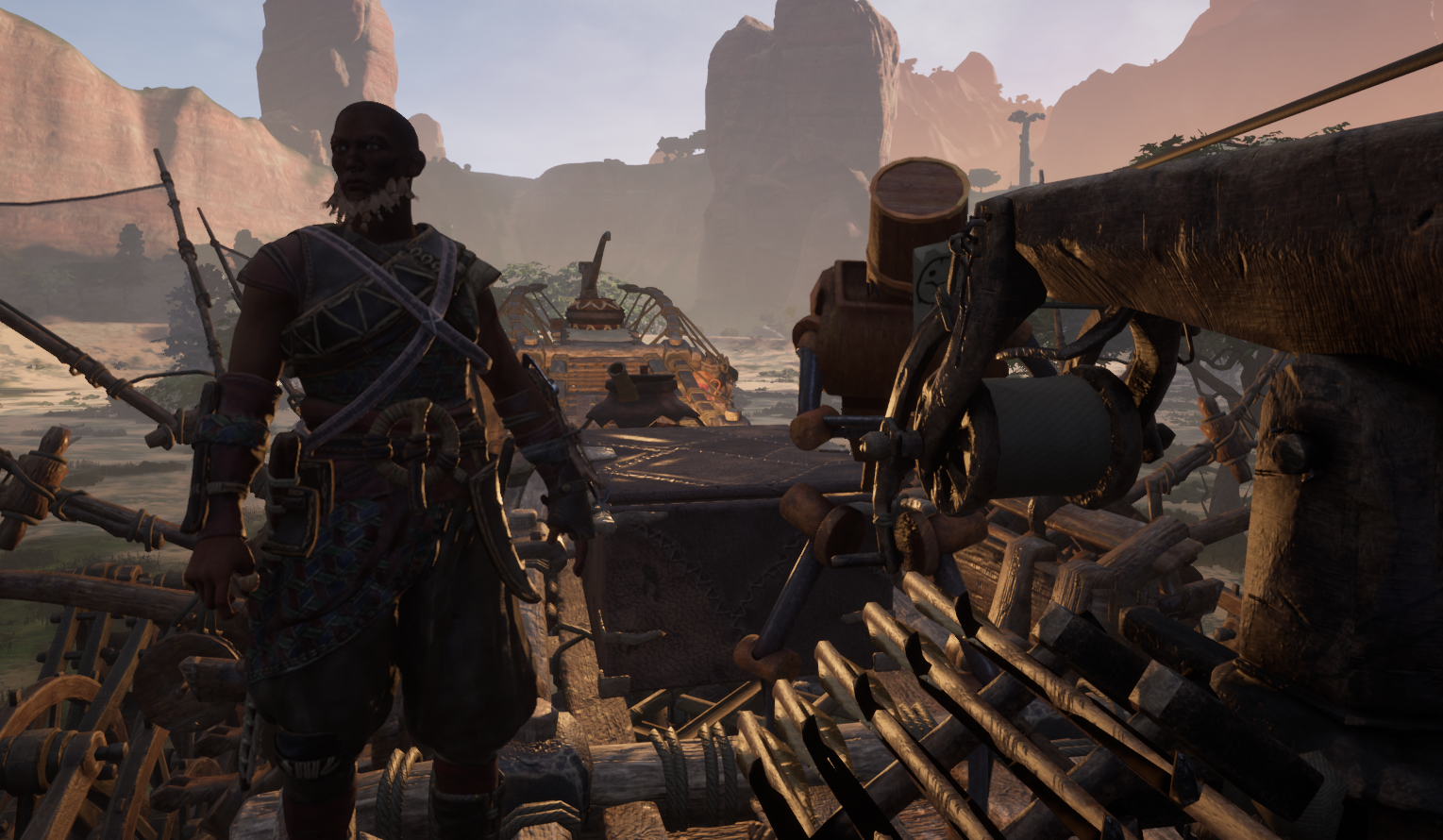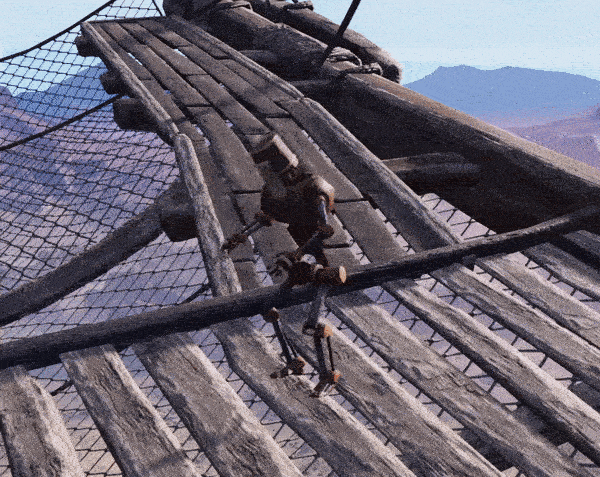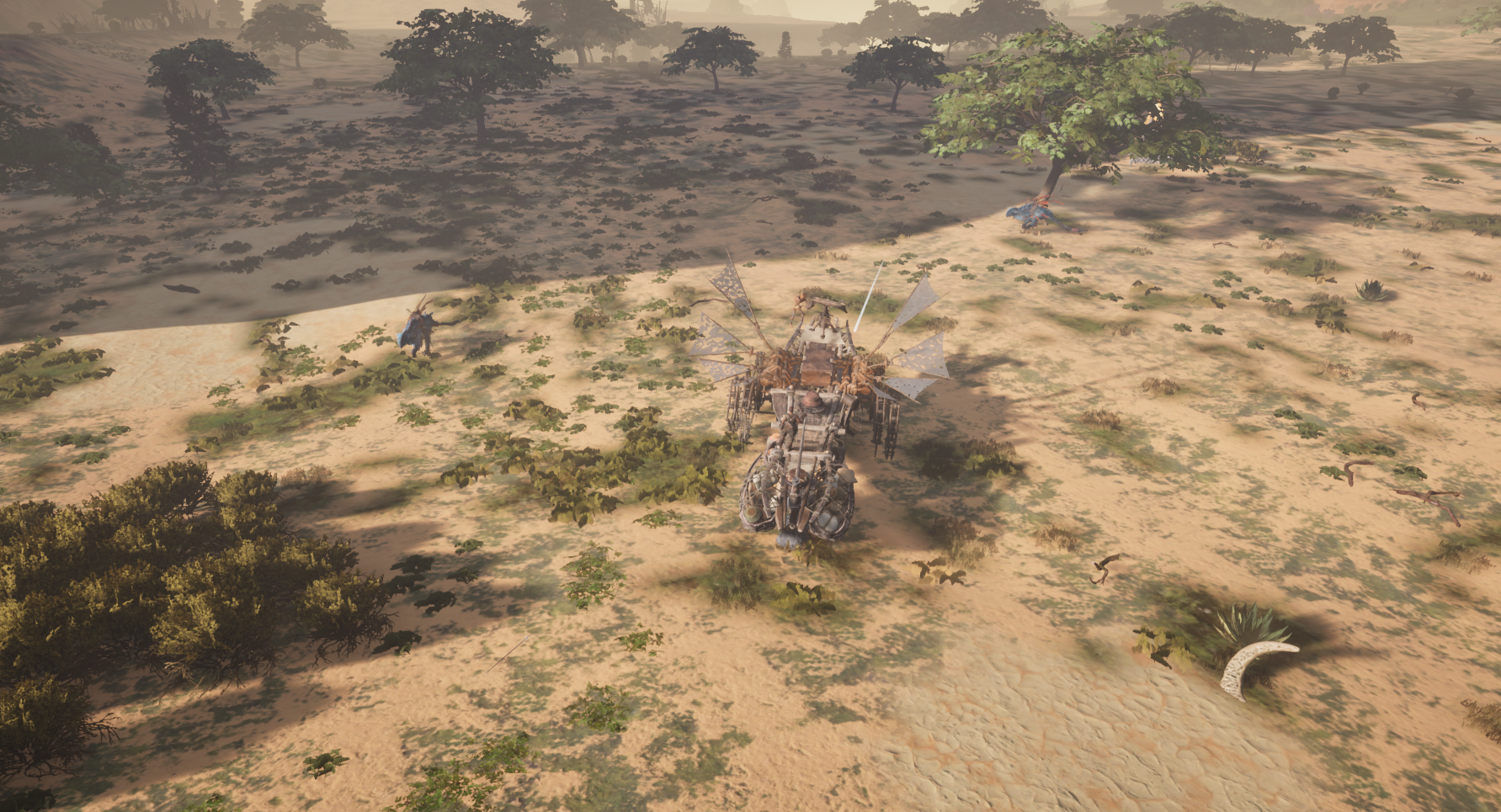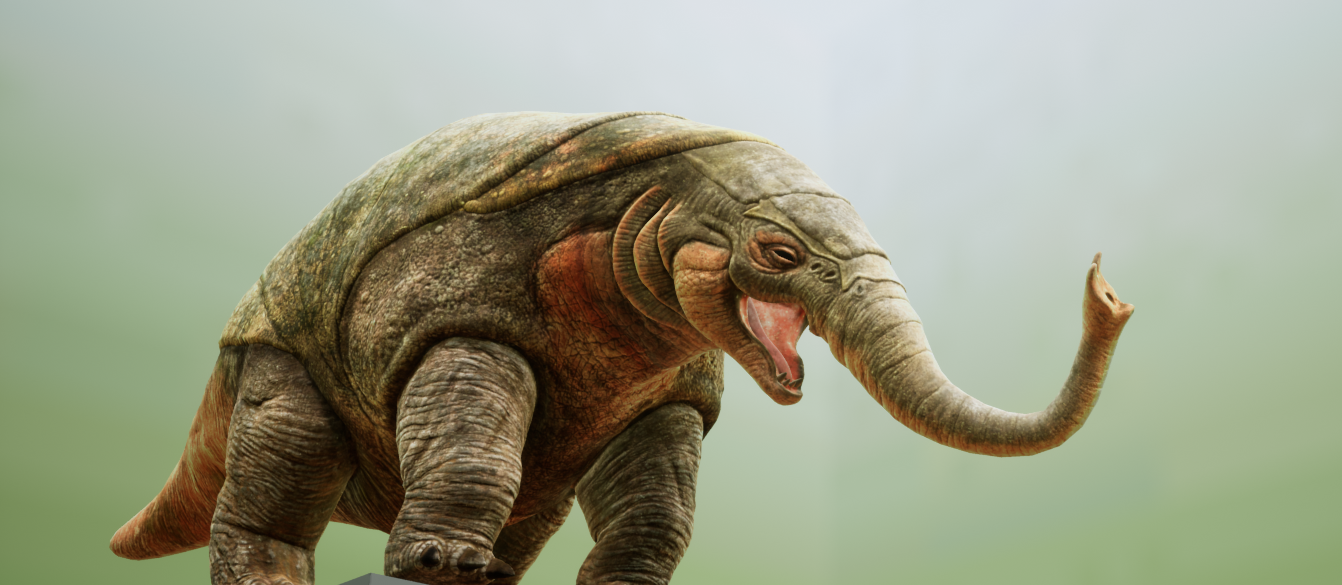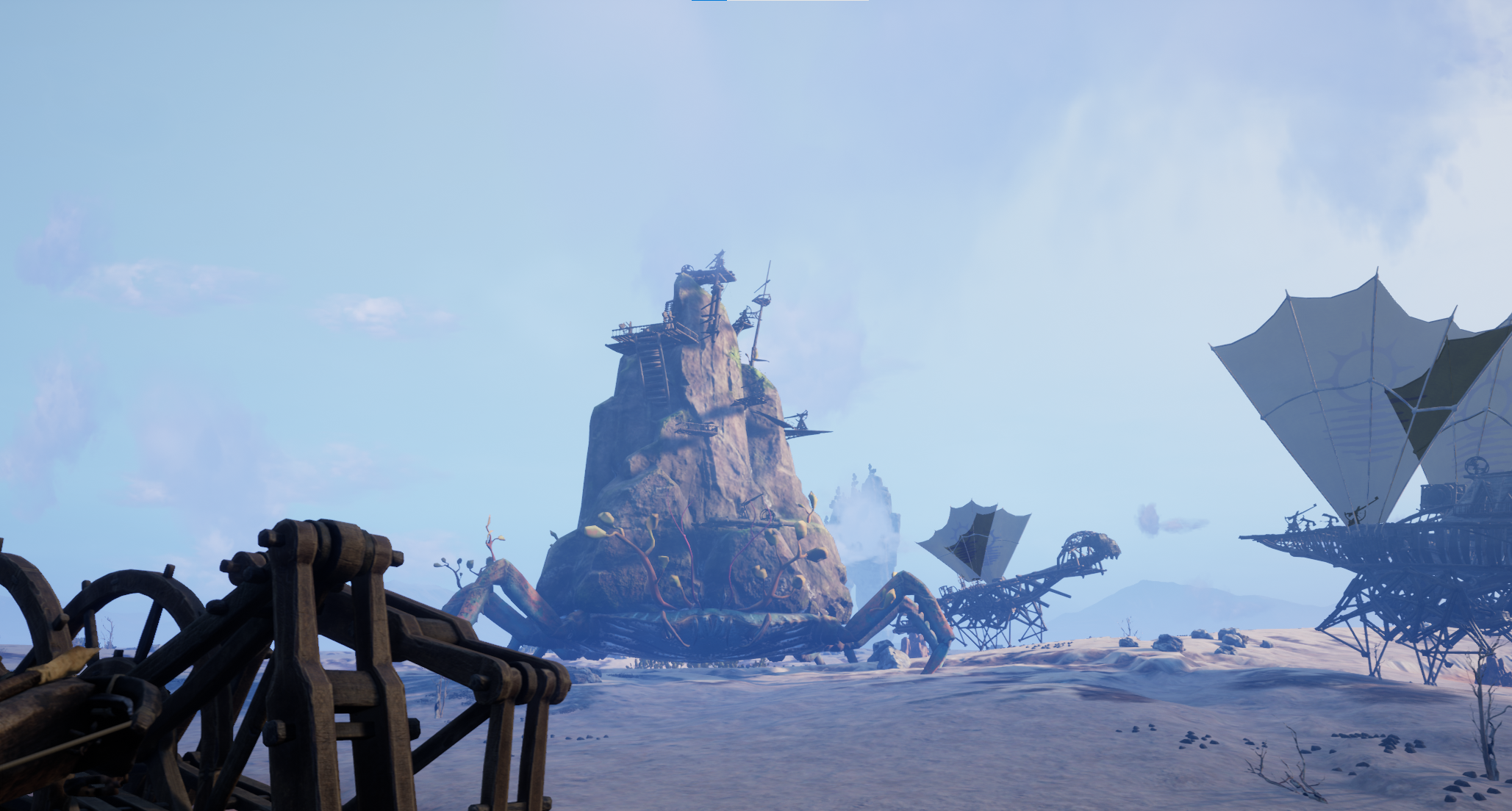
May 27, 2022
Last Oasis - Neon Sirius
Last week’s PVE maps and lobby removal announcement stirred a lot of discussions, so we want to answer some of the concerns we noticed before we get into the travel rework details.
For starters, private realms will have the ability to enable and disable these changes at the preference of the server admin/s.
This means they can choose whether or not there’s any PVE tiles on their realm (which may function differently from the current implementation of PVE tiles for private realms, which works through additional settings per-tile), they can choose whether or not they want the old or the new travel system, and they can also have the lobby functionality enabled realm-wide.
When it comes to the feedback we’ve received from you guys about the PVE maps, so far we are very happy to see that they are mostly well received. Some of the biggest points of interest are lobby functionality not being a thing anymore (which we fully expected, it’s been a core feature of the game for very long, but is a very needed step for the overhaul), environmental hazards eating through all your stuff while on vacation, and lastly the other major concern that was brought up being the overall balance for the PVE tiles themselves.
In regard to the concerns of the lobby functionality being removed having too much of a negative impact on gameplay: We’ve been looking into the lobby feedback very closely, and we have considered the possibility of adding off-map lobby functionality for Trading Stations, with some limitations of course. This is not something that we will immediately implement during the public testing, first we want to test these systems as they were originally designed and balanced and then we’ll start working on changes based on testers’ feedback during the public testing phase.
These are systems that can be (and will be) quickly iterated upon, so we have a very big advantage here compared to other seasons - this means the first version we come up with will most likely not be what S5 releases with.
For Season 5 of Last Oasis, we’re introducing a reworked travel system that does away with lobby-based travel, and instead works within the map itself.
Reaching the map edge of an oasis will no longer allow for travel upon pressing a key - in order to travel from one oasis to another, you will need to find travel routes in the raging sandstorms at the edges of the oasis. These pathways through the storms will become available periodically, and upon crossing them, you will begin to travel to another map - no key press required at all.
In regards to UI/UX, we’re aiming for very minimal UI interactions required in order to travel, and instead make the UI much more informative - displaying destination oasis, amount of players on destination, and the danger meter. The actual travel will happen when crossing with the Walker or on foot. If players require further information, the world map is still available, but no interactions are required on the world map. It’s purely informational, displaying information on trade offers, highlighting travel routes from one oasis to another, etc.
Due to the nature of this new travel mechanic, a lot of the finer details will be iterated upon several times during our public testing phase as mentioned above, this means balance factors such as the intervals and amount of travel routes available and their destinations, the size allowance for Walker classes - some of these pathways will, for example, only allow smaller Walkers to pass through, and disallow Capital, Large and Medium class Walkers from following through the sandstorm. A lot of these balance factors will be changed several times to accommodate different iterations of the system that take into account how it's received by players during our play-testing, and mainly how it actually feels in comparison to the old system.
Travel routes are meant to be the only method of travel available, unless we deem it necessary to eventually add some other possible ways of travel. This means that many things are changing in regards to travel, not just the mechanic itself, such as resource requirements and teleporting around the world.
Travel will no longer cost water from the Walker storage - this is something that will also help us a lot with re-balancing the water costs for respawning, which heavily impacts Walker combat.
It will no longer be possible to respawn on another oasis unless you traveled there with a Walker, or on foot.
This means that if you want to meet up with a friend or reinforce a faraway fight, you will need to physically travel in order to get there. We will be reworking the in-oasis player spawn points so that it’s easier to rebuild a basic Walker and be more invested in the area you spawn in.
One of the issues that we constantly see with the current travel system is that it’s extremely reliant on a lot of UI and on the player figuring out a somewhat convoluted and outdated method of travel.
We saw this during S1 of the game, where players would very often struggle to understand how the system even worked, and would sometimes simply quit the game at that very early stage. We hoped to mostly remedy it by increasing the duration of the oases so they would take longer to burn, but that was yet another one of the band-aids that we’re ripping off for Season 5, because it’s a band-aid, not a proper solution.
The system that we’re introducing as a replacement for current lobby-based travel is meant to do many things, among them is what I mentioned earlier, which is to get rid of convoluted and confusing UI interactions, but that is a small thing compared to the two major goals we want to achieve with it, and some of the other benefits that we see from this change.
Firstly, we want to have finer control over the spread of players across the world. This is hugely important to us for many reasons, the main one being that we are placing a bigger emphasis on players and clans living and playing from individual oases and clusters of oases within the larger world, rather than having the ability (and in some cases the necessity) to teleport from one region to another in literally a few minutes.
Added up, a lot of the changes we have planned for Season 5 have the requirement of travel to be a much more important part of the game experience, and we needed to have a much more robust travel mechanic that has the ability to have a much bigger impact on the progression of players across the different tiers and map difficulties. Slowing down travel is completely intentional here. We want to give much clearer danger zones, so that players have the ability to scout and recognize places and other players and clans they can interact with, either peacefully or through Sawtooth diplomacy.
Finally, one of the most important things we will be tackling with this rework is the dreaded issue of queues, more specifically getting stuck in them for hours on end.
One of the biggest flaws from the old travel system was the issue of allowing travel to oases even though they were full, or very crowded with players.
We want to avoid this completely by implementing our travel routes in a way they cannot lead players into completely full maps, ever. We have already foreseen some of the potential exploits that could come out of this, and we have some solutions for them, but we know our players are far better at finding those, so some major testing will be required to ensure we don’t end up with worse bugs.
Generally speaking, though, few bugs can be worse than not being able to play the game at all, so we’re pretty happy with what the system can do already.
With the removal of lobby, performance is a big topic that’s been brought up very often recently. Game balance can only do so much here, eventually players and clans will build up large fleets of Walkers and create massive structures everywhere. One of the answers we have for this (in conjunction with the balance changes and reworked progression) is our improved weather system, and our first proper weather event - roaming sandstorms.
The first implementation of the sandstorms and our primary intention for them is really to be cleansing mechanics, both for PVP and PVE maps. The idea is sandstorms come from various directions all over the oasis, and the only way to protect against them is to have any kind of barriers - both player-built and natural barriers like hills, mountains, etc.
The way they are currently implemented, these storms roam the map systematically, all areas within an oasis will roughly be hit every one to two hours by a sandstorm on average - so, for example, if you stayed somewhere in the map for two hours without moving at all, on average you’d be hit by a sandstorm at least once.
Regardless of whether it’s in a PVE or a PVP map, any player-built objects will require some sort of protection in order to survive the storms, anything out in the open will be periodically taking damage over time when hit by the storms, both for performance and balance reasons, so that we ensure most things have a cost associated with having them protected.
Over time, any Walkers and unprotected buildables (weapons and structures built on the ground without base walls to protect them) will eventually be destroyed by taking damage over time.
This initial sandstorm weather even will not be harmful for most structures, as bases are actually intended to protect Walkers and players from them in the first place, but we also have concepts (no implementation yet, but it could be very easy to work on if it’s something that you’d like to see in the game) for far more dangerous events that would not necessarily be wind-based like the storms, and instead be similar to our small meteor events, as an example. There’s a lot of ideas for these - many of which would be easy to implement - and now that we’ve put this new mechanic out in the open, we’d actually love to hear yours as well!
With the way this weather system is implemented, it’s very easy for us to work on new storms and events, all kinds of weather effects should be possible with it, now that we have almost finished the groundwork needed.
When it comes to additional effects that could be implemented through this weather system, we’ve many concepts and ideas already, but we’ll be starting with the first one already mentioned, the roaming sandstorms.
The sandstorms will have several effects when going through the map. Firstly its going to be able to damage players themselves, not excessive amounts, it does a little bit of damage to them (with some interesting situations where you can also look away from where its coming from to take less damage, for players only specifically). We won’t initially but in the future we have planned to add more protective armor to make it easier for nomads to endure a sandstorm, and future weather effects as well.
The second effect it will have is all about physics. Anything that’s physical will be blown away by storms, and it will also cause damage on things like Walkers, as well as a pushing effect that will move things around.
We also want to see how players use this in-game during our testing, the pushing effect is something that we’re very interested in, since it could eventually inspire more wind-based effects, not harmful ones but utility based (there’s always been this idea of wind-based effects for structures like torque windmills, Walker speed modifiers, etc. which we think is very cool, and would love to see how it’d play out in-game).
For next week’s devblog, we’ll be delving deeper into the reworked progression system and how it works with rarity items - no fragments and tablets anymore, we’re trying something new that, we expect, once again, might get emotions up there :)
— Neon
For starters, private realms will have the ability to enable and disable these changes at the preference of the server admin/s.
This means they can choose whether or not there’s any PVE tiles on their realm (which may function differently from the current implementation of PVE tiles for private realms, which works through additional settings per-tile), they can choose whether or not they want the old or the new travel system, and they can also have the lobby functionality enabled realm-wide.
When it comes to the feedback we’ve received from you guys about the PVE maps, so far we are very happy to see that they are mostly well received. Some of the biggest points of interest are lobby functionality not being a thing anymore (which we fully expected, it’s been a core feature of the game for very long, but is a very needed step for the overhaul), environmental hazards eating through all your stuff while on vacation, and lastly the other major concern that was brought up being the overall balance for the PVE tiles themselves.
In regard to the concerns of the lobby functionality being removed having too much of a negative impact on gameplay: We’ve been looking into the lobby feedback very closely, and we have considered the possibility of adding off-map lobby functionality for Trading Stations, with some limitations of course. This is not something that we will immediately implement during the public testing, first we want to test these systems as they were originally designed and balanced and then we’ll start working on changes based on testers’ feedback during the public testing phase.
These are systems that can be (and will be) quickly iterated upon, so we have a very big advantage here compared to other seasons - this means the first version we come up with will most likely not be what S5 releases with.
Travel Rework
For Season 5 of Last Oasis, we’re introducing a reworked travel system that does away with lobby-based travel, and instead works within the map itself.
Reaching the map edge of an oasis will no longer allow for travel upon pressing a key - in order to travel from one oasis to another, you will need to find travel routes in the raging sandstorms at the edges of the oasis. These pathways through the storms will become available periodically, and upon crossing them, you will begin to travel to another map - no key press required at all.
In regards to UI/UX, we’re aiming for very minimal UI interactions required in order to travel, and instead make the UI much more informative - displaying destination oasis, amount of players on destination, and the danger meter. The actual travel will happen when crossing with the Walker or on foot. If players require further information, the world map is still available, but no interactions are required on the world map. It’s purely informational, displaying information on trade offers, highlighting travel routes from one oasis to another, etc.
Due to the nature of this new travel mechanic, a lot of the finer details will be iterated upon several times during our public testing phase as mentioned above, this means balance factors such as the intervals and amount of travel routes available and their destinations, the size allowance for Walker classes - some of these pathways will, for example, only allow smaller Walkers to pass through, and disallow Capital, Large and Medium class Walkers from following through the sandstorm. A lot of these balance factors will be changed several times to accommodate different iterations of the system that take into account how it's received by players during our play-testing, and mainly how it actually feels in comparison to the old system.
Travel routes are meant to be the only method of travel available, unless we deem it necessary to eventually add some other possible ways of travel. This means that many things are changing in regards to travel, not just the mechanic itself, such as resource requirements and teleporting around the world.
Travel will no longer cost water from the Walker storage - this is something that will also help us a lot with re-balancing the water costs for respawning, which heavily impacts Walker combat.
It will no longer be possible to respawn on another oasis unless you traveled there with a Walker, or on foot.
This means that if you want to meet up with a friend or reinforce a faraway fight, you will need to physically travel in order to get there. We will be reworking the in-oasis player spawn points so that it’s easier to rebuild a basic Walker and be more invested in the area you spawn in.
One of the issues that we constantly see with the current travel system is that it’s extremely reliant on a lot of UI and on the player figuring out a somewhat convoluted and outdated method of travel.
We saw this during S1 of the game, where players would very often struggle to understand how the system even worked, and would sometimes simply quit the game at that very early stage. We hoped to mostly remedy it by increasing the duration of the oases so they would take longer to burn, but that was yet another one of the band-aids that we’re ripping off for Season 5, because it’s a band-aid, not a proper solution.
The system that we’re introducing as a replacement for current lobby-based travel is meant to do many things, among them is what I mentioned earlier, which is to get rid of convoluted and confusing UI interactions, but that is a small thing compared to the two major goals we want to achieve with it, and some of the other benefits that we see from this change.
Firstly, we want to have finer control over the spread of players across the world. This is hugely important to us for many reasons, the main one being that we are placing a bigger emphasis on players and clans living and playing from individual oases and clusters of oases within the larger world, rather than having the ability (and in some cases the necessity) to teleport from one region to another in literally a few minutes.
Added up, a lot of the changes we have planned for Season 5 have the requirement of travel to be a much more important part of the game experience, and we needed to have a much more robust travel mechanic that has the ability to have a much bigger impact on the progression of players across the different tiers and map difficulties. Slowing down travel is completely intentional here. We want to give much clearer danger zones, so that players have the ability to scout and recognize places and other players and clans they can interact with, either peacefully or through Sawtooth diplomacy.
Finally, one of the most important things we will be tackling with this rework is the dreaded issue of queues, more specifically getting stuck in them for hours on end.
One of the biggest flaws from the old travel system was the issue of allowing travel to oases even though they were full, or very crowded with players.
We want to avoid this completely by implementing our travel routes in a way they cannot lead players into completely full maps, ever. We have already foreseen some of the potential exploits that could come out of this, and we have some solutions for them, but we know our players are far better at finding those, so some major testing will be required to ensure we don’t end up with worse bugs.
Generally speaking, though, few bugs can be worse than not being able to play the game at all, so we’re pretty happy with what the system can do already.
Roaming Sandstorms & Weather System
With the removal of lobby, performance is a big topic that’s been brought up very often recently. Game balance can only do so much here, eventually players and clans will build up large fleets of Walkers and create massive structures everywhere. One of the answers we have for this (in conjunction with the balance changes and reworked progression) is our improved weather system, and our first proper weather event - roaming sandstorms.
The first implementation of the sandstorms and our primary intention for them is really to be cleansing mechanics, both for PVP and PVE maps. The idea is sandstorms come from various directions all over the oasis, and the only way to protect against them is to have any kind of barriers - both player-built and natural barriers like hills, mountains, etc.
The way they are currently implemented, these storms roam the map systematically, all areas within an oasis will roughly be hit every one to two hours by a sandstorm on average - so, for example, if you stayed somewhere in the map for two hours without moving at all, on average you’d be hit by a sandstorm at least once.
Regardless of whether it’s in a PVE or a PVP map, any player-built objects will require some sort of protection in order to survive the storms, anything out in the open will be periodically taking damage over time when hit by the storms, both for performance and balance reasons, so that we ensure most things have a cost associated with having them protected.
Over time, any Walkers and unprotected buildables (weapons and structures built on the ground without base walls to protect them) will eventually be destroyed by taking damage over time.
This initial sandstorm weather even will not be harmful for most structures, as bases are actually intended to protect Walkers and players from them in the first place, but we also have concepts (no implementation yet, but it could be very easy to work on if it’s something that you’d like to see in the game) for far more dangerous events that would not necessarily be wind-based like the storms, and instead be similar to our small meteor events, as an example. There’s a lot of ideas for these - many of which would be easy to implement - and now that we’ve put this new mechanic out in the open, we’d actually love to hear yours as well!
With the way this weather system is implemented, it’s very easy for us to work on new storms and events, all kinds of weather effects should be possible with it, now that we have almost finished the groundwork needed.
When it comes to additional effects that could be implemented through this weather system, we’ve many concepts and ideas already, but we’ll be starting with the first one already mentioned, the roaming sandstorms.
The sandstorms will have several effects when going through the map. Firstly its going to be able to damage players themselves, not excessive amounts, it does a little bit of damage to them (with some interesting situations where you can also look away from where its coming from to take less damage, for players only specifically). We won’t initially but in the future we have planned to add more protective armor to make it easier for nomads to endure a sandstorm, and future weather effects as well.
The second effect it will have is all about physics. Anything that’s physical will be blown away by storms, and it will also cause damage on things like Walkers, as well as a pushing effect that will move things around.
We also want to see how players use this in-game during our testing, the pushing effect is something that we’re very interested in, since it could eventually inspire more wind-based effects, not harmful ones but utility based (there’s always been this idea of wind-based effects for structures like torque windmills, Walker speed modifiers, etc. which we think is very cool, and would love to see how it’d play out in-game).
For next week’s devblog, we’ll be delving deeper into the reworked progression system and how it works with rarity items - no fragments and tablets anymore, we’re trying something new that, we expect, once again, might get emotions up there :)
— Neon








